Joshua Tree National Park
Where else to find Joshua trees than Joshua Tree National Park in southeastern California?
The park and the Mojave Desert welcomed us four years ago today, though actually we’d seen our first Joshua trees two weeks earlier in Nevada, and then in Barstow.
These “trees” aren’t truly trees at all, but members of the yucca family, Yucca brevifolia. Yuccas are members of Agavoideae, which isn’t so surprising, but that group is a part of the asparagus family, a fact that does surprise most people. Not all is as it seems, is it?
And how about finding a nest in one of the Joshua trees? Thanks to the staff at Joshua Tree National Park for telling me that the maker of the nest is most likely a ladder-backed woodpecker, Picoides scalaris.
© 2020 Steven Schwartzman




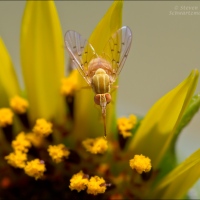
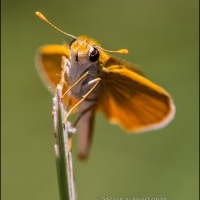
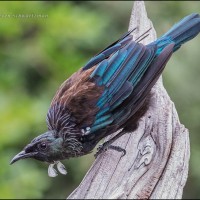
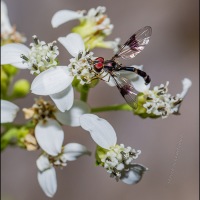
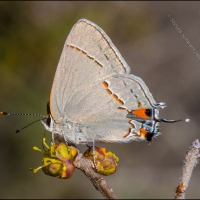
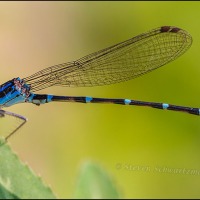

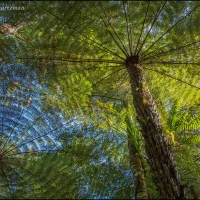
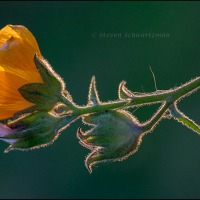
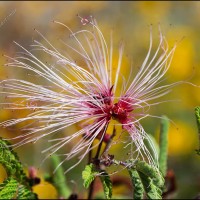
I imagine many other birds rely on that “tree” for nesting materials.
Steve Gingold
November 5, 2020 at 5:16 AM
Such shaggy bark makes me think you’re right.
Steve Schwartzman
November 5, 2020 at 6:22 AM
Since you mentioned asparagus, I did a quick search, and there’s quite a few articles and videos about how to prepare the blossoms and fruit. Most of them mentioned the sugar contact, but do not mention any similarities in flavor to asparagus. The difference in height must be striking, when the Joshuas and Asparagi get together for family gatherings.
Robert Parker
November 5, 2020 at 5:20 AM
You’re funny with that vision of height disparity when the Joshuas and Asparagi attend a family reunion. I’ll bet you could work the concept up into quite a post.
Steve Schwartzman
November 5, 2020 at 6:44 AM
The last photo seems to be implying a question: Y knot? I’m really intrigued by the second photo. Do all Joshua trees begin that way, and then branch as they mature? That one reminds me of the longleaf pine, which grows straight up without branches until it’s reached a certain height. I really like the third photo, where the Joshua tree and the rock seem to be leaning toward one another.
shoreacres
November 5, 2020 at 7:03 AM
If we have I-beam, U-turn, T-shirt, and S-trap, why not Y-knot?
I also wondered about the form of the young Joshua tree in the second photo. Had I come across it in isolation I probably wouldn’t have recognized it as a Joshua tree. Whether all Joshua trees go through that “bottle brush” phase, I don’t know, and some brief searching didn’t turn up an answer. You may recall that in the second picture at
https://portraitsofwildflowers.wordpress.com/2020/10/25/red-rock-canyon-national-conservation-area-2/
I wasn’t sure I was seeing young Joshua trees; if that’s what they really were, then they looked different from the erect one here. In today’s third picture, I’m with you in appreciating what the roughly conical boulder pile added to the Joshua tree’s leaning.
Steve Schwartzman
November 5, 2020 at 7:22 AM
My parents visited this area many years back and I asked them how it was. I still remember my dad stating you seen one Joshua Tree you seen them all – ha! He liked the rock formations better. Thanks for taking me down memory lane this morning. Happy Day – Enjoy!
cravesadventure
November 5, 2020 at 7:21 AM
Happy trip down memory lane. Until our visit, I hadn’t known about the rock formations, which I appreciated the way your father did, and which I included in some of my pictures. I also found plenty to like in the Joshua trees themselves, which can look quite different from each other. For me as a photographer, it wasn’t at all a case of “seen one, seen them all.”
Steve Schwartzman
November 5, 2020 at 7:38 AM
I really like that shot of the woodpecker nest. What a cozy place to ‘dig in’ and set up digs! And I’m not sure why, but I find the third image very pleasing to the eye. Perhaps it is the simplicity of the big rock, big blue sky, and that big yucca in the foreground worshipping the sun.
Littlesundog
November 5, 2020 at 7:27 AM
After four years, only in preparing this post did I think to contact the National Park Service at Joshua Tree to see if anyone there could identify the kind of cozy nest in the last picture. Like you, Linda singled out the third picture here, in which the leaning caught her attention. Now you’ve added sun worship. Ah, the part that imagination plays…
Steve Schwartzman
November 5, 2020 at 7:43 AM
After viewing your post on the intriguing Joshua tree I searched for the origin of its name and came up with this: By the mid-19th century, Mormon immigrants had made their way across the Colorado River. Legend has it that these pioneers named the tree after the biblical figure, Joshua, seeing the limbs of the tree as outstretched in supplication, guiding the travellers westward.
Peter Klopp
November 5, 2020 at 8:43 AM
I’ve read the same explanation for the name given to this “tree.” The Mormons named various things and places after people in the Book of Mormon and in the Christian Bible. Here’s an article about that:
https://www.deseret.com/2001/1/13/19563085/religious-place-names-are-abundant-in-utah
Steve Schwartzman
November 5, 2020 at 12:25 PM
Isn’t it a wonderfully mystical place? Mystical is the sense of wonder, how anything grows and thrives out there? It’s been a few years since I’ve been through the park, but I enjoy seeing the trees/cacti, wildflowers, and critters that call it home.
circadianreflections
November 5, 2020 at 9:07 AM
I wish I were as relatively close to Joshua Tree as you are. I’m equally fond of places that impart a sense of mystery or wonder. We have cacti in central Texas, but not deserts or large geological features like mountains. That’s what travel is for, if only we could be doing it now.
Steve Schwartzman
November 5, 2020 at 12:31 PM
I’ve been a California resident for almost twelve years and still haven’t managed to visit Joshua Tree. It’s shameful! 😦 I will get there soon!!
M.B. Henry
November 5, 2020 at 4:10 PM
Go for it! My mother was born in New York City and spent all but a few years of her life in the New York City area yet never visited the Statue of Liberty.
Steve Schwartzman
November 5, 2020 at 4:25 PM
I too hope to get there one day. Btw, Jim Henson’s followers could do well to design a new Muppet character after the Joshua tree.
krikitarts
November 7, 2020 at 1:41 AM
Now there’s a novel idea. You should reach out to the group and suggest it.
Steve Schwartzman
November 7, 2020 at 6:43 AM
Another favorite place, one I’d like to see again and again.
bluebrightly
November 11, 2020 at 6:43 PM
That was our first and so far only visit to Joshua Tree. Like you, I’d be happy to see the place again.
Steve Schwartzman
November 12, 2020 at 8:04 AM
A few species of yuccas grow sort of like Joshua trees. The flowers are edible. So are the juvenile floral stalks. However, the floral stalks of Joshua tree are mostly too high to reach, and armed with spiny foliage. There are easier yucca flower stalks to collect. We ate (Hespero)Yucca whipplei flower stalks in college. They are like asparagus, but not as good.
tonytomeo
November 16, 2020 at 3:50 PM
Well, yuccas are in the enlarged asparagus botanical family, so maybe we should be surprised about edible shoots in some species. Do you know which yuccas grow sort of like Joshua trees?
Steve Schwartzman
November 16, 2020 at 6:21 PM
Yucca filifera – mixtecana – periculosa – potosina – valida actually ‘look’ like Joshua tree types. There are a few varieties of Joshua tree as well. Many of the 50 or so species of Yucca develop trunks, but most have large leaves that do not resemble those of Joshua tree.
tonytomeo
November 21, 2020 at 2:30 AM
Based on your previous comment I wondered if some of what I saw that I thought were Joshua trees might have been the species you mentioned, but I see that all of those are from Mexico and therefore probably not what I saw in Nevada and southeastern California.
Steve Schwartzman
November 21, 2020 at 9:57 AM
What looked like Joshua trees in Nevada and California likely were, for that reason. The other native species of Yucca look nothing like them. However, I do not know what varieties of Joshua trees live where.
tonytomeo
November 22, 2020 at 3:40 PM
These trees are always amazing! That straight upright specimen with no branches reminds me that they develop branches as they get each new generation started. That particular tree probably has never had the proper rain & cold seasons to flower. Hope that patch of the park didn’t have too many Joshua Trees like that!
Scott Dee
January 13, 2021 at 4:51 PM
I think you know a lot more about these trees than I do. We spent just one day in the national park, and I hurried to get as many different sorts of pictures as I could. The species must be acclimatized to scant rain because that’s what they get out there.
Steve Schwartzman
January 13, 2021 at 5:39 PM